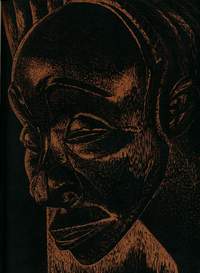

| BIRTH OF THE KATANGA MODERNE
Jean Jadot (1862 - 1932), Director, then Governor of the General Society of Belgium, was the most influential promoter of the foundation of the Mining union. As Administrator, and soon President of the Council of the Society, he/it was some until his/her/its death one of the main animators.
Sir Robert Williams (1860 - 1938), Vice-president of the Mining union and President of the Tanganyika Concession Ltd, was assigned to direct the propection of the mining wealths of the Katanga, recognized by the Belgian geologist Small horn. He/it got Cecil Rhodes to make deviate toward the Katanga the railroad of Rhodesia, to which another tracing had been assigned. |
The first mention of a copper exploitation in the Katanga is in a report dated of 1798 of the Portuguese governor of the Rio of Sena, capitainerie of Mozambique. This report reveals that a trafficker goanais had surrendered, two years before, to the south of the Moëro lake, at the big chief Cazembe who "possesses mines of copper and gold and is in war with a chief whose earths produce the latâo (brass or yellow copper) ". Seventy years later, Livingstone notes: "By fusion of the malachite, ore of copper, the natives of the Katanga get grnads ingots in the shape of capital I"... The Belgians, from 1876, participate in the exploration of the African center and their role affirms itself to every stage of the king Léopold II work: in 1877, to the creation of the association Internationale African and the Committee of study of the High Congo,; in 1885, at the time of the foundation of the state Indépendant,; and in 1908 finally, when this State becomes the Belgian Congo. The Katanga, southern part of this territory, was occupied late because of his/her/its remoteness of the maritime ways: of 1890 to 1892, four Belgian expeditions are assigned to recognize this region submitted to the terror of the black potentate Me siri. The Marinel, Delcommune, Stairs, and finally Bia and Francquis take possesion of the country and explore it. The young Company of the congo for the trade and the industry (C.C.C.I.) that financed the expedition of Alexander Delcommune founds in 1891,à the suggestion of the state, a subsidiary,: The Company of the Katanga, whose object is on the floor the exploration of the basin of the High Congo, the survey of the possibilities of colonization, agriculture and mining exploitation, the establishment of the communication ways and by water and the constitution finally of agricultural and mining exploitation organisms. Since his/her/its constitution, the Company of the Katanga takes the load of the Delcomunne expedition; she/it organizes then, during the years 1891 and 1892, the Stairs-Bodson missions and BIA-Francquis, that conclude some treaties with the local chiefs. The geologist Jules Cornet, attached to the Bia-Francqui expedition, carries through the first scientific survey of the geology of the country and describes the importance of his/her/its mineral lodgings. At the same time, the political occupation of the territory ends and the rallying of the main indigenous chiefs is acquired. By convention of March 12, 1891, the state had granted some territories to the Company of the Katanga, in return for his/her/its collaboration. But the desire of each of the two parts to be present in all zones entails an entanglement as, in spite of the cartographic precisions, all efficient assignment proves to be impossible.. It is only n 1900 that a solution intervenes by the creation of the Special Committee of the Katanga (C.S.K.), to which the Company of the Katanga and the independent state bring their heritage with mission to enhance it and to distribute the fruits of it between them, on the basis of their contributions, either two third for the state Indépendant and a third for the Company of the Katanga. While undertaking the construction of roads and the survey of the agricultural possibilities of the region, the Special Committee made the inventory of the mining wealths recognized by the works of Jules Cornet his/her/its main objective. To this end, the Committee grants, December 8, 1900, to an English society, the Tanganyika Concession Limited, the right of propecter the regions of the southern Katanga. It was the beginning of a cordial and fertile collaboration between business men and Belgian and English engineers, that was going to succeed to the creation of the MINING union OF THE HIGH KATANGA, October 28, 1906. In this new society the animators of the first research, Robert Williams and Jean Jadot meet, supported by the power conjugated of their respective groups, the Tanganyika and the General Society of Belgium.Extrait Extrait de la revue "Haut-Katanga" N° 39 - août 1957 |

|
Click on the arrow return index